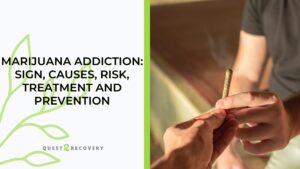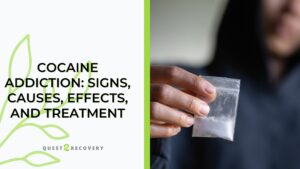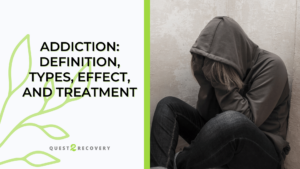Opiate addiction continues to be a national epidemic, with mounting loss of life occurring each day in the U.S. In fact, according to the National Institute on Drug Abuse, 115 people die each day in our country due to opioid or opiate overdose. For individuals who are addicted to heroin or prescription painkillers, one of the barriers to getting treatment is an aversion to the intense discomfort of opiate detox and withdrawal. While true that the physical pain and the extreme drug cravings experienced in opiate detox are highly unpleasant, it is important to recognize detox as the lesser of the two evils, the other being an overdose death.
Addiction specialists are increasingly relying of medication-assisted treatment to help ease the withdrawal symptoms associated with opiate detox. Doctors, who have obtained a special waiver from the DEA to prescribe Suboxone for opiate addiction treatment, can use Suboxone for detox from opiates, as well as maintenance therapy. Much evidence is available to support the efficacy of Suboxone as an important tool to help individuals successfully complete detox and achieve a sustained and productive recovery.
What is Suboxone Injection?
Suboxone is a narcotic that is delivered via a sublingual film, containing two ingredients: buprenorphine and naloxone. The buprenorphine acts as a partial opioid agonist, mimicking the natural neurotransmitters in the brain and providing a mini-version of an opiate’s effects. The naloxone acts as a pure opioid antagonist, blocking and reversing the euphoric effects of the opioid. Suboxone replaces the heroin or opioid of addiction with a much lower opioid dosing that is gradually tapered off as recovery becomes stabilized.
Suboxone is, in many ways, supplanting methadone, which has been used for decades to treat opiate addiction. Methadone is a highly regulated drug requiring patients on methadone maintenance to physically obtain the drug at a dedicated methadone clinic. This strict regulation is inconvenient, but necessary in order to avoid abuse of the drug, where Suboxone can be dispensed at a regular pharmacy.
Suboxone, How it Works
Suboxone works by binding onto the opioid receptors in the brain, the same receptors that the heroin or opioids bound to. Even though the Suboxone contains a minimal amount of opioid, it is able to suppress pain. The naloxone component can block any pleasure response or euphoria, making other opioids inconsequential should the person relapse, whole also creating a deterrent for the Suboxone itself to be abused.
Using Suboxone for Detox from Opiates
Once the individual begins to experience mild withdrawal symptoms they will be able to begin Suboxone therapy. Suboxone will ease the withdrawal symptoms within eight hours, and if used only for detox, is administered for 3-4 days for most clients. Clients with a more acute opiate addiction may need the Suboxone detox assistance for up to two weeks. It is critical to wait until early withdrawal symptoms present before administering Suboxone, as given too soon can trigger intense withdrawal symptoms, the opposite of the desired effect.
When using Suboxone for detox from opiates, it is designed for opiates only, so if the individual has a polydrug dependency they could still experience the specific withdrawal symptoms associated with those drugs. This situation would indicate the need for additional medications.
Suboxone in Early Recovery
There are varying opinions among addiction specialists about the value of long-term Suboxone maintenance therapy. Because Suboxone is itself an opioid, it is felt by some to only prolong the opioid addiction instead of aiming for abstinence from all opiates. These professionals see the benefit of Suboxone for detox from opiates, as it helps individuals overcome their fear of detox and withdrawal so they can begin the recovery process.
However, other addiction professionals believe that, because the brain chemistry has been so impacted by the opiate addiction, to try to function without any form of the drug at all leads to relapse, mostly due to unchecked drug cravings. By using Suboxone for three months or six months post-treatment, it is felt that the recovering addict can adjust better to the daily demands of work, school, or family. The tapering process should begin no later than one year post rehab.
Precautions About Suboxone
When using Suboxone for detox from opiates, there are some common side effects cited, including:
- Fainting or light headedness
- Constipation
- Headache
- Sweating
- Concentration problems
- Back pain
- Blurred vision
- Stomach distress
- Drowsiness
- Insomnia
- Dizziness
- Swollen or painful tongue
However, most of these side effects will resolve spontaneously with continued use of Suboxone. The opiate withdrawal symptoms peak on day three, and then slowly subside. At the end of two weeks, both the psychological and physical withdrawal symptoms will likely be completed, although drug cravings can persist. For this reason, to help prevent relapse, Suboxone is often prescribed in the early months of recovery.
Using Suboxone as a replacement drug in a medically assisted treatment program is not without its critics. Although it is generally considered to be a helpful step-down drug in recovery from opiates, it does nothing to treat the actual addictive behaviors. When someone is placed on Suboxone as a maintenance drug, but does not address and get treatment for the maladaptive behaviors that feed addiction, they could begin to abuse Suboxone as well. There is also a risk of acquiring an addiction to Suboxone.
Quest 2 Recovery Provides Suboxone for Detox From Opiates
Quest 2 Recovery is a highly regarded leader in the addiction recovery field, serving the greater Los Angeles region. The doctor at Quest 2 Recovery, who is authorized to prescribe Suboxone, may determine that some clients will benefit from this medically-assisted treatment. For those recovering from an opiate addiction or dependency, Suboxone is considered the gold standard in the addiction treatment industry, helping those in recovery successfully complete detox and withdrawal.
Suboxone may also be prescribed to help reduce drug cravings in the early months of recovery. After a certain time period, the doctor will begin the tapering schedule to wean the client off of the Suboxone. For more information about our program, please contact Quest 2 Recovery today at (888) 453-9396.









